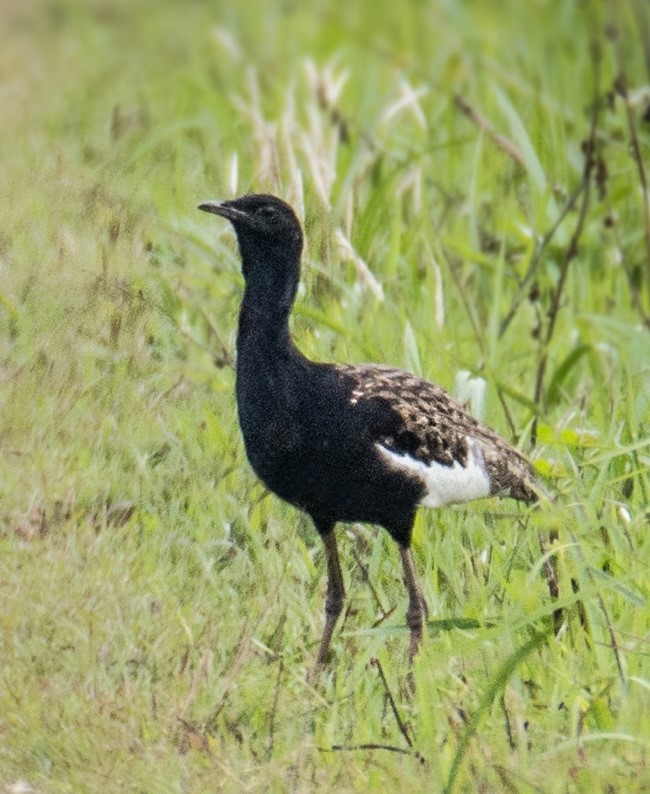Description

Disclaimer: Copyright infringement not intended.
Context: Assam Chief Minister shared photographs of the successful eviction drive at Burachapori Wildlife Sanctuary.
About Bura Chapori Wildlife Sanctuary
Location
- It is a protected area located in the state of Assam in India.
- This wildlife sanctuary covers 44.06 km2, on the south bank of the Brahmaputra River in Sonitpur district.
Background
- The area was declared a Reserved forest in 1974, it became a sanctuary in 1995.
Ecosystem
- It forms an integral part of the Laokhowa-Burachapori eco-system and is a notified buffer of the Kaziranga Tiger reserve.
Biodiversity
- It is considered to be an ideal habitat for the Bengal florican.
- It is a paradise for many migratory birds. Reptiles and fish are also found here.
- Mammals: Indian rhinoceros, tiger, leopard, wild buffalo, hog deer, wild pigs and occasionally a herd of el: ephants.
- Birds: Bengal florican, black-necked stork, mallard, openbill stork, teal, whistling duck and many others
About the Bengal florican

Disclaimer: Copyright infringement not intended.
- Scientific Name: Houbaropsis bengalensis
Location
- Also called the Bengal bustard, is a bustard species native to the Indian subcontinent, Cambodia, and Vietnam.
- The Bengal florican has two disjunct populations.
- One occurs from Uttar Pradesh through the Terai of Nepal to Assam and Arunachal Pradesh in India, and historically to Bangladesh.
- The other occurs in Cambodia and perhaps adjacent southern Vietnam.
- Migrations are not long-distance, however, and probably are restricted to a few dozen kilometers.
- Bengal floricans live in open tall grassland habitats with scattered bushes.
Description
- The male Bengal florican has a black plumage from the head and neck to underparts.
- Immature Bengal floricans look like a female.
- The female is larger than the male.

Social Behaviour
- They are normally silent but, when disturbed, utter a metallic chik-chik-chik call.
- Displaying males croak and produce a deep humming sound.
Conservation status
- It is listed as Critically Endangered on the IUCN Red List because fewer than 1,000 individuals were estimated to be alive as of 2017.
- It is the only member of the genus Houbaropsis.
- Restricted to tiny fragments of grassland scattered across South and Southeast Asia, the Bengal florican is the world's rarest bustard.
- It is known to have become increasingly threatened by land conversion for intensive agriculture, particularly for dry season rice production.
- Poaching continues to be a problem in Southeast Asia.
|
PRACTICE QUESTION
Q) Which of the following statements with reference to Bengal Florican is/are incorrect?
1. The Bengal florican is the world's rarest bustard.
2. It is native to the Indian subcontinent, Cambodia, and Vietnam.
a. 1 only
b. 2 only
c. Both 1 and 2
d. Neither 1 nor 2
Correct Answer: d
|

https://theprint.in/india/assam-cm-sarma-shares-pics-after-successful-eviction-drive-at-burachapori-wildlife-sanctuary/1573825/













